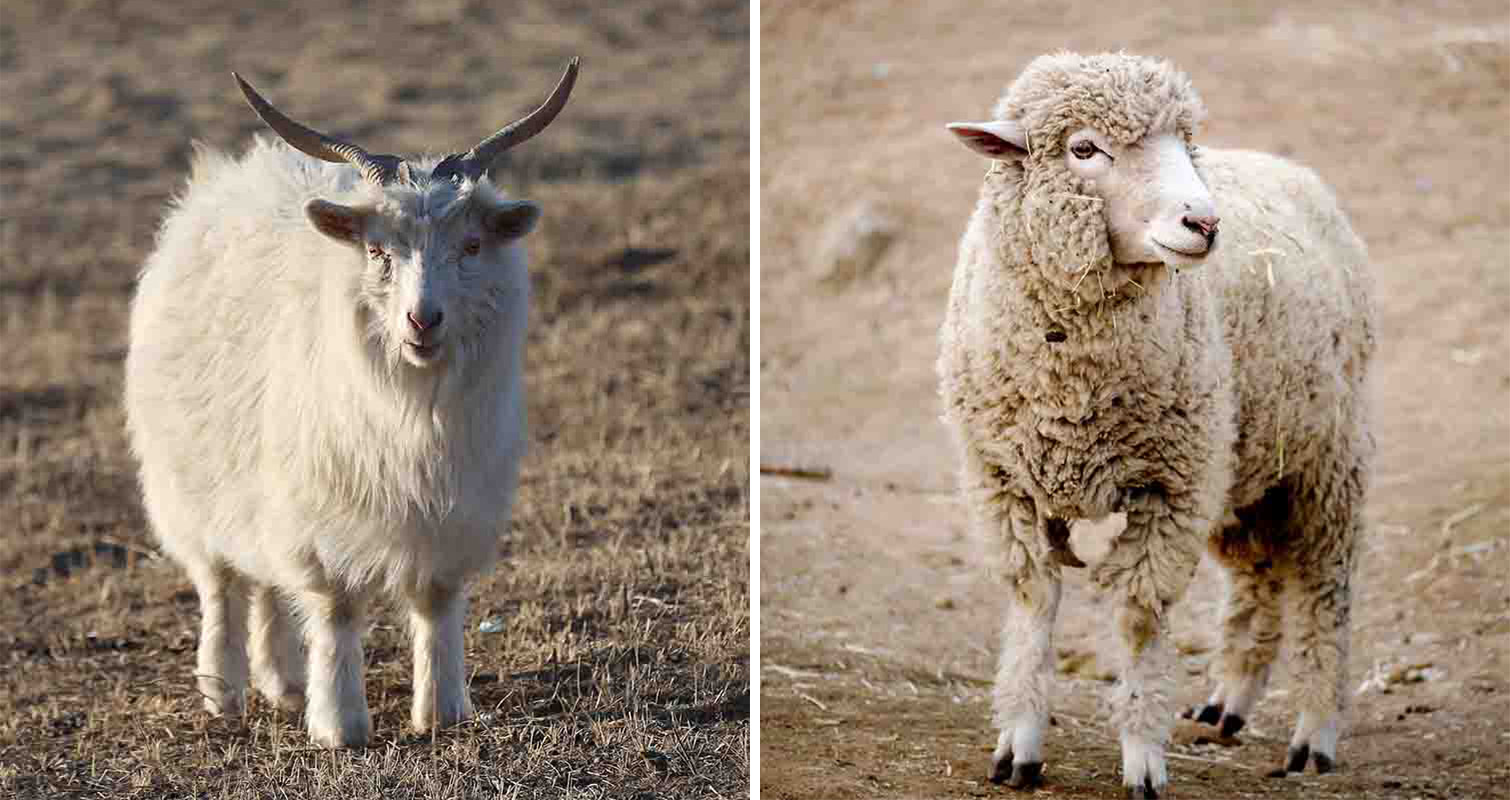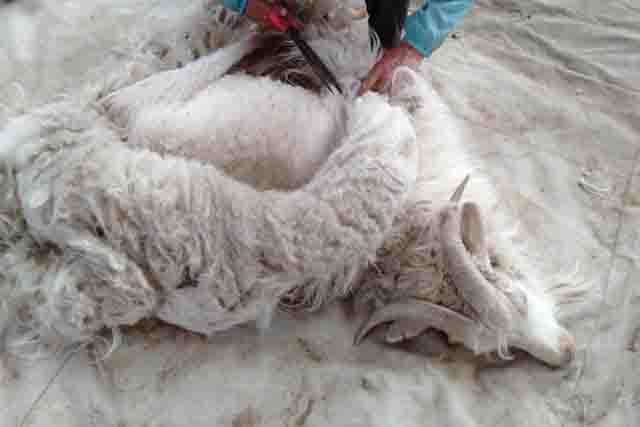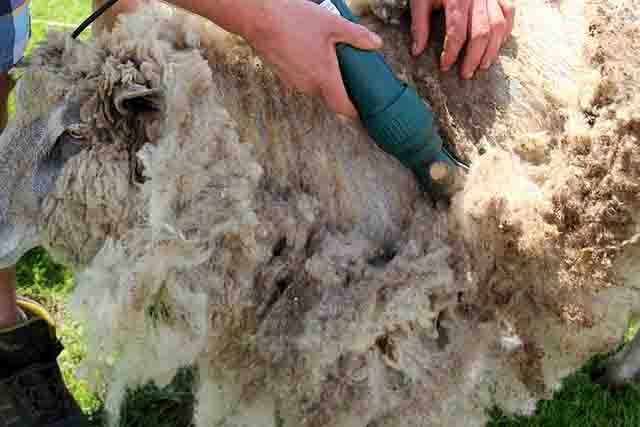How Cashmere Fiber is Harvested
Cashmere goats naturally shed their thick hair during spring when they don't need it anymore. Human intervention is to facilitate this process.
What is Cashmere and Where Does Cashmere Come from?

Cashmere Goat(left) and Sheep(right)
First things first, we need to distinguish between sheep and goats. Sheep produce wool and goats produce cashmere. But not all goats produce cashmere that we know today. The breeds of goats capable of yielding this fine fiber are aptly called “cashmere goats”.
Cashmere goats always have two layers of coats. One is the outer layer that's coarse and long. The other is a very thin undercoat layer that protects the animal from extreme cold. And this undercoat layer is where cashmere comes from.
If you're still not familair with cashmere, please visit What is Cashmere.
Is it Harmful to Collect Cashmere from a Goat?
No. Goats grow cashmere because they need to stay warm during winter. When temperature rises in spring, they start to molt. This is a natural process that goats undergo to adapt themselves to drastic seasonal changes.
Appropriate human intervention is a good thing since if goats can't shed their hair in time, which happens quite often, they might die from heatstroke or hyperthermia.
The main concern of animal welfare is how cashmere goats are treated during the process of fiber collecting. There have been cases exposing ill-treatment of goats, but they are isolated instances that don't tell the whole story. Goat herders value their animals dearly since they are the main source of livelihood. Especially Mongolians, who attach themselves closely to their land and animal, consider ill-treatment of lives of all sorts a despicable act.
When is Cashmere Collected?
Timing is very important when it comes to shearing goats.
If too early, cashmere fiber is not loose enough so it causes pain in goats when combed and the aninals won't be very cooperative. However, if too late, the fiber is already straying away from the animal and some of it might have already been lost due to daily activities of the animal.
Another important thing is that being either too early or too late won't give you good quality cashmere. And remember, cashmere is collected only once in a year.
In Inner Mongolia, May is the best time for shearing. But for other regions where spring comes a little sooner, like Hebei province, Shanxi province, Shan'xi province etc. shearing is conducted mainly in April.
What are the Methods for Collecting Raw Cashmere Fiber?

Combing

Shearing with Scissors

Shearing with Electric Clippers
Combing: Traditionally, combing was a common practice but it was very inefficient and proved not ideal for commercial purposes.
Shearing with Scissors: This is much faster than combing but the downside is it's easy to cause damage to goats when handled inappropriately.
Shearing with Electric Clippers: Even faster and least likely to cause damage. This is the method used most commonly now.
How Much Cashmere Can You Get from a Cashmere Goat?
On average, about 800-1200 grams of raw fiber can be collected from a cashmere goat. But this is the very raw fiber that contains sand, dust, grass, urine and fecal matter etc. After cleaning, this dirty mass will only yield between 300-350 grams of clean cashmere fiber (compare this to an average of 3kg of clean wool fiber a merino sheep produces).
Depending on what products are being made, 10%-50% of this clean cashmere fiber can be wasted as material loss during production.